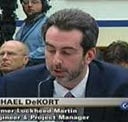Reaching just 1X human level for autonomous vehicles, using public shadow and safety driving, is impossible too
In the past I focused on showing how impossible it is to spend the time, money and endure the inevitable deaths of thousands of human test subjects, to get to an autonomous system that is 10X better than a human. The better argument is that most of this is true even if you want to develop and prove these systems are only as good as a human. I will list the reasons for this after once again making the argument for why public shadow and safety driving is untenable and harms people for no reason.
The FACT is it is impossible to drive the one trillion miles or spend over $300B to stumble and restumble on all the scenarios necessary to complete the effort. In addition, the process harms people for no reason. This occurs two ways. The first is through handover or fall back. A process that cannot be made safe for most complex scenarios, by any monitoring and notification system, because they cannot provide the time to regain proper situational awareness and do the right thing the right way, especially in time critical scenarios. The other dangerous area is training the systems to handle accident scenarios. In order do that AV makers will have to run thousands of accident scenarios thousands of times. that will cause thousands of injuries and deaths.
1X is the same as 10X
· Machine Learning — You still have to find all the objects in the world any sensor or human cares about, make the degraded versions of them and train all the associated scenarios including complex and accident scenarios. 10X better than a human is a competency value largely created by removing human’s frailties and mistakes. Fact is humans drive very well when they drive competently. Since it is already impossible to stumble and restumble on all the scenarios needed to train and test the systems using public shadow and safety driving there is really no change here. It’s still impossible.
· Testing and Validation — As with the scenarios list you still have to ensure all the scenarios are learned. This includes accident scenarios. 1X better than a human is the quality of performance when tested against the same scenario set as the set that would be measured to 10X a human.
· Long Tails — This doesn’t change either. It’s the same set of scenarios. So most of the work and cost of finding them and repeating them exists.
· Safety Driving Injuries and Deaths — You still have to enlist thousands of “safety drivers’ who have to literally commit suicide and harm others to learn these scenarios and prove they are learned. You still have to create and utilize Kamikaze pilots to do that. Again, the same set of thousands of accident scenarios will have to be run thousands of times to do this. The 1X to 10X delta is incompetency per scenario not volume of scenarios difference.
As always, the solution is to switch 99.9% of that public shadow and safety driving to aerospace/DoD simulation technology and systems/safety engineering. (Not gaming engine-based systems as they have significant real-time and model fidelity flaws in complex scenarios).
Please find more information on this in my articles below
Using the Real World is better than Proper Simulation for Autonomous Vehicle Development — NONSENSE
The Hype of Geofencing for Autonomous Vehicles
SAE Autonomous Vehicle Engineering Magazine-End Public Shadow Driving
All the Autonomous Vehicle makers combined would not get remotely close to L4
My name is Michael DeKort — I am a former system engineer, engineering and program manager for Lockheed Martin. I worked in aircraft simulation, the software engineering manager for all of NORAD, the Aegis Weapon System, and on C4ISR for DHS.
Key Autonomous Vehicle Industry Participation
- Lead — SAE On-Road Autonomous Driving SAE Model and Simulation Task
- Member SAE ORAD Verification and Validation Task Force
- Expert — DIN/SAE International Alliance for Mobility Testing & Standardization (IAMTS) group to create sensor simulation specs
- Stakeholder for UL4600 — Creating AV Safety Guidelines
- Member of the IEEE Artificial Intelligence & Autonomous Systems Policy Committee (AI&ASPC)
- Presented the IEEE Barus Ethics Award for Post 9/11 Efforts
My company is Dactle
